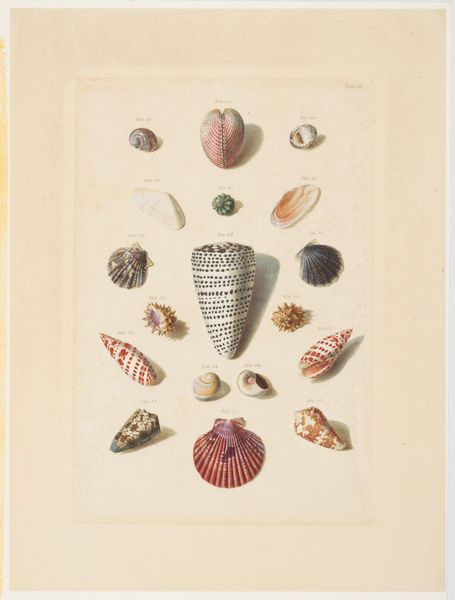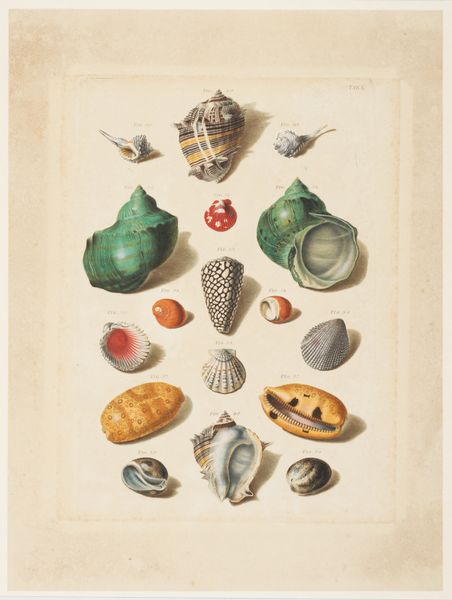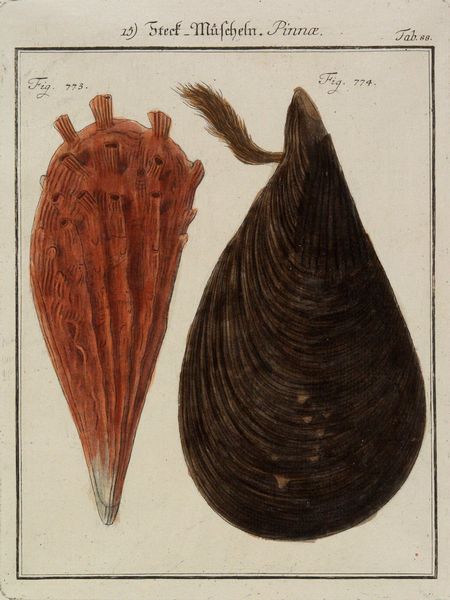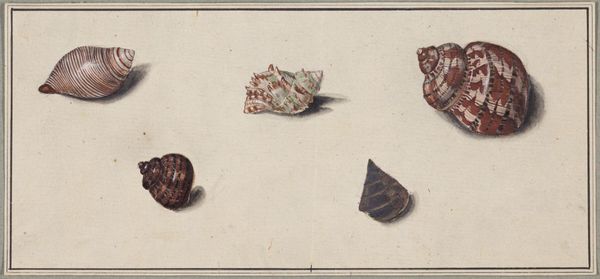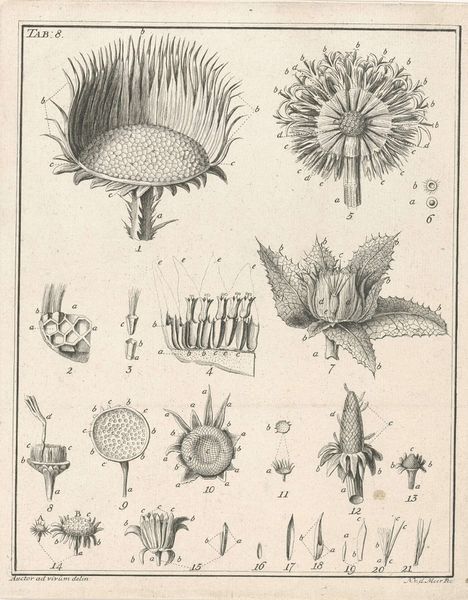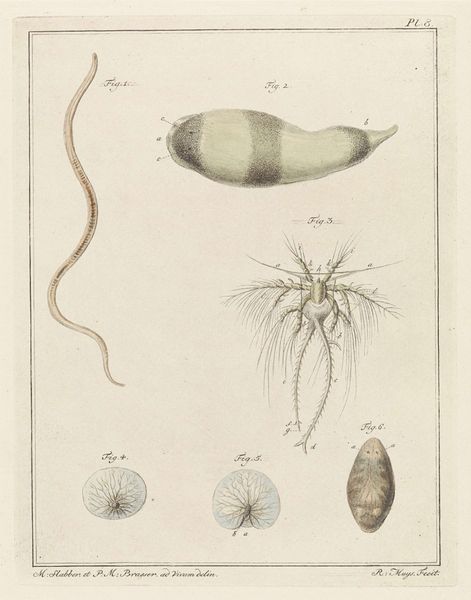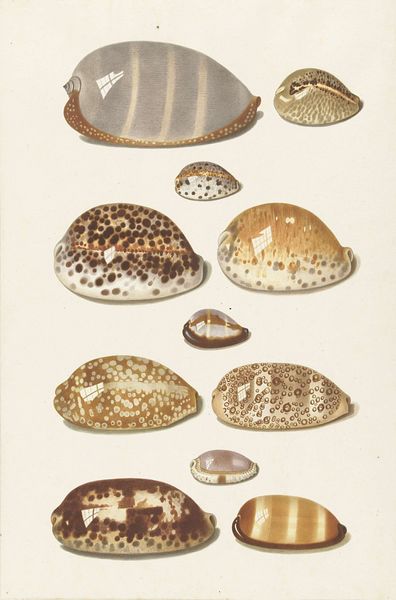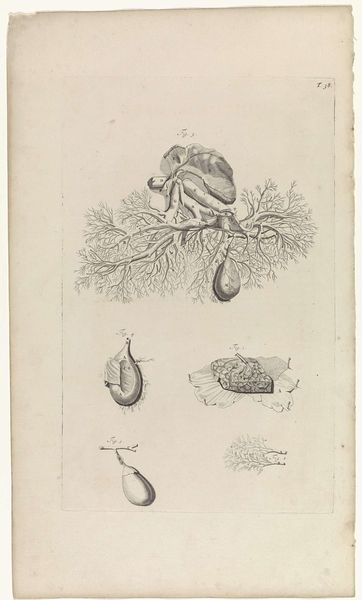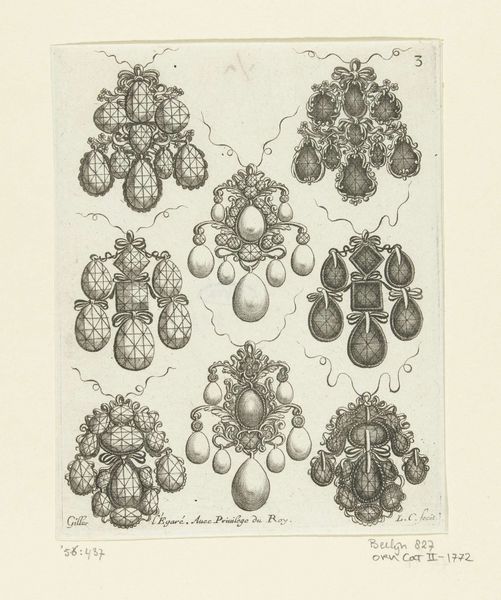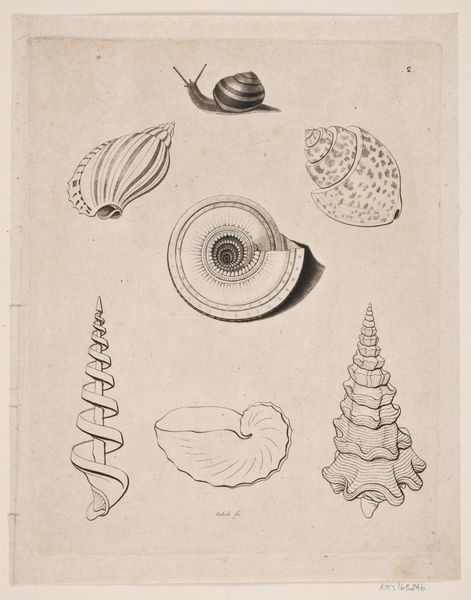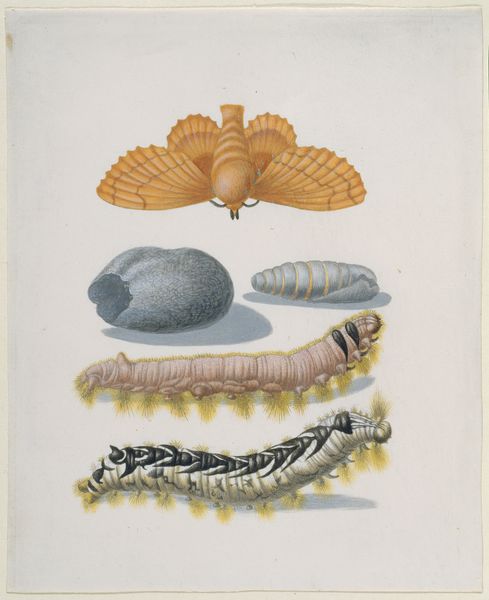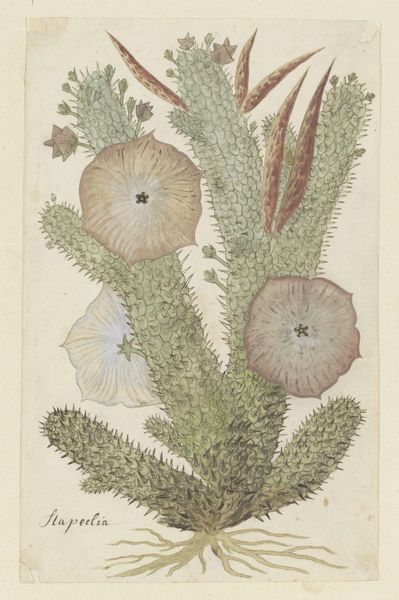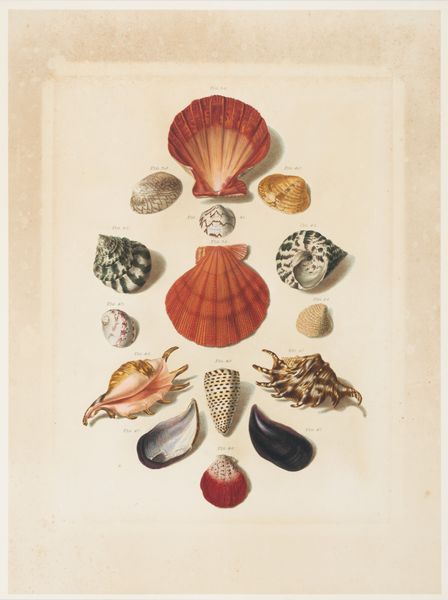
drawing, hand-colored-etching, print, watercolor, engraving
#
drawing
#
hand-colored-etching
#
germany
# print
#
watercolor
#
coloured pencil
#
watercolour illustration
#
engraving
#
botanical art
#
watercolor
Dimensions: 8 7/8 x 6 11/16 in. (22.54 x 16.99 cm) (image)11 3/4 x 9 3/8 in. (29.85 x 23.81 cm) (sheet)
Copyright: Public Domain
Curator: Let's turn our attention to "Chamae," a hand-colored etching created in 1784 by Friedrich Heinrich Wilhelm Martini, residing here at the Minneapolis Institute of Art. Editor: At first glance, the shells’ organized display gives a clinical impression, like specimens pinned in place. There’s an almost unsettling tension between their vibrant hues and the stark arrangement. Curator: The composition hinges on that very contrast, wouldn't you agree? Notice how each individual form is delineated with remarkable precision. The engraving, followed by the watercolor washes, enhances their texture and three-dimensionality, inviting a closer formal reading. Editor: Absolutely. I am struck by how each shell seems to carry a particular emotional weight. The spiky red shell in the upper left has a kind of bristling defensiveness, in contrast with the soft curves of the pearlescent shell to its right which seems to me like quiet self-containment. I wonder what the artist intends? Curator: Martini, a known conchologist, appears dedicated to descriptive accuracy rather than subjective interpretation. The clean lines, meticulous detail – it's an Enlightenment project focused on classification. Though as iconography, these shells, often symbolic of pilgrimage or love in other cultures, are here stripped of that familiar resonance, put in the service of objective scientific cataloging. Editor: That shift in symbolic function is really quite fascinating. By prioritizing visual information and decontextualizing the objects, he seems to be inviting us to see them anew. Almost as if he is suggesting a fresh cultural reading through the careful recording of surface features. Curator: Yes, through form alone the work manages to suggest at something more. What starts as a scientific exercise blooms into aesthetic delight because the shapes, the tonal shifts... they create rhythms, internal echoes. Editor: So, what initially appeared to be a clinical display slowly reveals, through these aesthetic observations, a deeper understanding of our relationship with both the natural world and its associated cultural understanding. Curator: Precisely. It prompts consideration of how our perceptions evolve under new systems of visual classification. Editor: It really transforms the natural and emotional world through ordered observation.
Comments
No comments
Be the first to comment and join the conversation on the ultimate creative platform.
